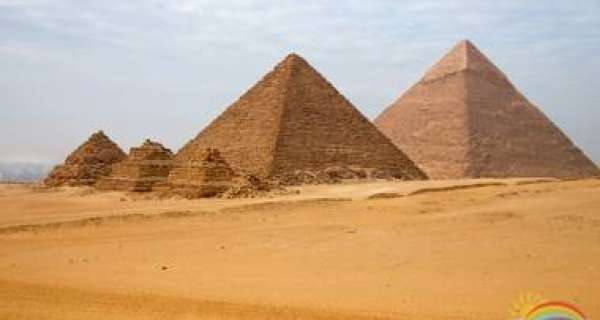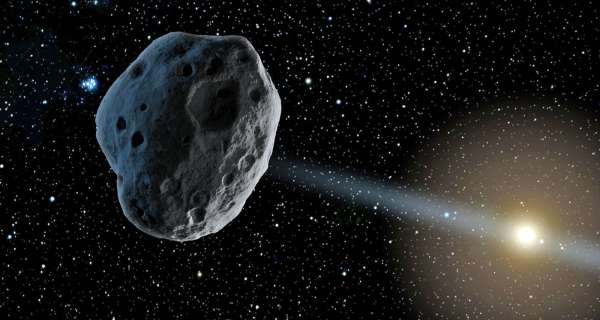The Great Pyramid of Giza is one of the storied Seven Wonders of the Ancient World. Also called Khufu's Pyramid, It's among the oldest, biggest human-made structures on Earth. Part of what makes it so wonderful is that old as it is, it still holds mysteries. Built sometime between 2509 to 2483 B.C.E. to entomb the remains of Egyptian pharaoh Khufu — also known as Cheops — the Great Pyramid was built to withstand millennia of harsh desert winds, but nobody really knows how it was built or exactly what its internal structure is like. But thanks to particle physics, we now know a little something more.
New research published in the journal Nature suggests that the pyramid might hold a vast, previously unknown cavity, an empty space roughly as long as an airplane hangar. The exact dimensions aren't known, but how does a researcher find a chamber like this — what they're calling a "void" — when they're not exactly allowed to take sledgehammers to a 4,500-year-old structure?
The international research team used a technique called muon tomography — a particle physicist's version of an x-ray machine, which uses the high-energy cosmic rays that are constantly pelting Earth from deep space to visualize, say, what's behind a heavy limestone wall. These cosmic rays are mostly made up of hydrogen nuclei, but as they hit our atmosphere, they explode into smaller elementary particles. A byproduct of this process is the creation of negatively charged particles called muons, which, once they pop into existence, shoot towards the ground at unfathomable speeds. They can be slowed down by big, dense things, though — things like the Great Pyramid of Giza.
In 2015, Scan Pyramids, a project of Cairo University and the Heritage Innovation Preservation (HIP) Institute, set out to explore the innards of the largest pyramids in Egypt. Muons are predictably difficult to detect, but not impossible, and muon tomography works by seeking out muons as they pass through matter, powering down and decaying in the process. Because hitting something solid can accelerate muon death, the researchers looked for places in the pyramid where more muons were evident, suggesting the particles were falling through an empty space — or at least one made of less solid material.
"There are so many theories — nice ones but also crazy ones," coauthor Mehdi Tayoubi, president of the Heritage Innovation Preservation Institute in Paris and co-founder of ScanPyramids told Nature News. So, in Khufu's Pyramid, just above a cathedral-like hall called the Grand Gallery, the researchers found a significant amount of muons, using three different detectors, in three different experiments, meaning something is there — and that something is nothing.
The research team hasn't offered up any theories about what purpose space might originally have served.
But experts warn not to get too excited:
"There's zero chance of hidden burial chambers," University of Bristol Egyptologist Aidan Dodson, who was not part of the research team, told Nature.
However, this research might be a good lead-in gleaning more insights into how this incredible structure was built.














